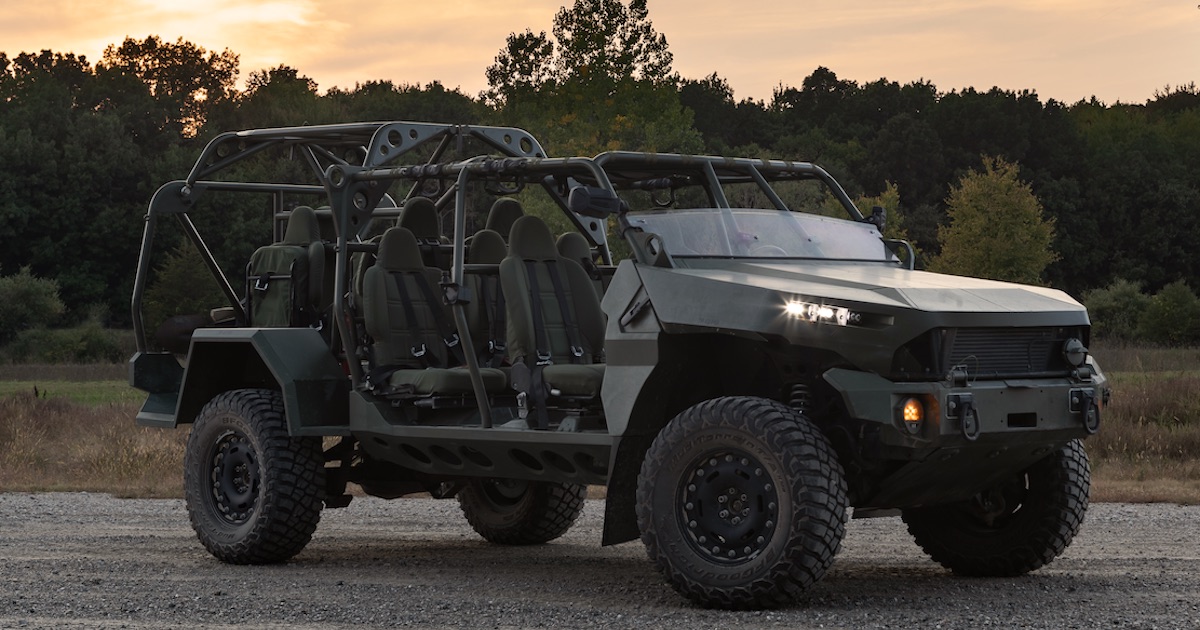

The Army’s new lightweight infantry assault buggy has a big problem: it’s a total pain in the ass to actually ride in.
Billed as “a light and agile all-terrain troop carrier,” the service’s Infantry Squad Vehicle (ISV) was designed to support an infantry squad of nine soldiers and their gear during 72-hour operations, a lightweight asset with muscular mobility and logistics support capabilities.
But according to new analysis from the Pentagon’s operational testing and evaluation arm published in January, the ISV simply isn’t cut out for its mission due to size constraints.
The ISV “has not demonstrated the capability to carry the required mission equipment, supplies, and water for a unit to sustain itself to cover a range of 300 miles within a 72-hour period,” according to the OT&E report, noting that the “lack of internal space to carry soldiers with their rucksacks in seats, mission-essential equipment, and sustainment loads may create a logistics and operational burden.”
“This limits the type and duration of missions for which an ISV may be effective,” as the OT&E report put it.
The ISV’s space constraints aren’t just a matter of storage, but readiness: According to the OT&E, the vehicle is simply too “cramped” for soldiers to actually get their jobs done in the field.
“Soldiers cannot reach, stow, and secure equipment as needed, degrading and slowing mission operations,” according to the OT&E report, which notes during testing, soldiers on all ISVs “could not readily access items in their rucksacks without stopping the movement, dismounting, and removing their rucksacks from the vehicle.”
This isn’t to say that the ISV is a total bust. According to the report, the vehicle certainly provides “enhanced off-road mobility capability and enables infantry units to be less predictable in their movement necessary to accomplish airborne; air assault; offensive; and engagement, security cooperation, and deterrence (ESD) missions.”
But with regards to potential combat situations, the ISV’s cramped interior and inaccessibility of critical gear could pose considerable challenges. To put it bluntly; if soldiers can’t easily ready and fire their weapons from within the vehicle, or quickly dismount and engage potential targets, they might end up as a sitting duck if caught in an ambush.
This is all especially alarming considering the ISV, with its lack of a formal cabin, is particularly vulnerable to roadside bombs. Indeed, the vehicle “does not have an underbody and ballistic survivability requirement,” according to the OT&E report.
A unit equipped with the ISV “will be susceptible to enemy threats and actions” and, instead of being able to duck behind the vehicle’s armor or rely on its plating (of which it has none), troops riding in it will have to trust in its speed and maneuverability to get them out of trouble and far from danger.
At the moment, the Army doesn’t seem all that concerned with these issues. According to ground mobility vehicle product lead Steve Herrick, “key requirements are being met and we are increasing soldier operational readiness by providing an operationally relevant vehicle that can transport small tactical units to a dismount point faster and in better physical and mental condition for the fight,” Defense News reports.
Light enough to be sling-loaded from a UH-60 Blackhawk helicopter and compact enough to fit inside a CH-47 Chinook helicopter, the 5,000-pound ISV is based on the Chevrolet Colorado ZR2 midsize truck and fabricated from 90 percent “proven commercial-off-the-shelf parts,” according to defense contractor GM Defense.
The Army officially accepted its first batch of ISVs from GM Defense in late October after awarding the company a $214.3 million contract in June to manufacture 649 ISVs for the service and, over time, support the production of up to 2,065 vehicles over eight years with additional authorization.
The Army initially ordered 25 ISVs for $5.728 million as part of the service’s fiscal year 2020 budget before the branch’s fiscal year 2021 budget request boosted procurement to 167 ISVs for a total of $37.932 million.
It’s unclear which lucky soldiers will get the first opportunity to squeeze into the new battlewagon in the coming months, but if the OT&E report is any indication, they may need to slim down a bit beforehand.
